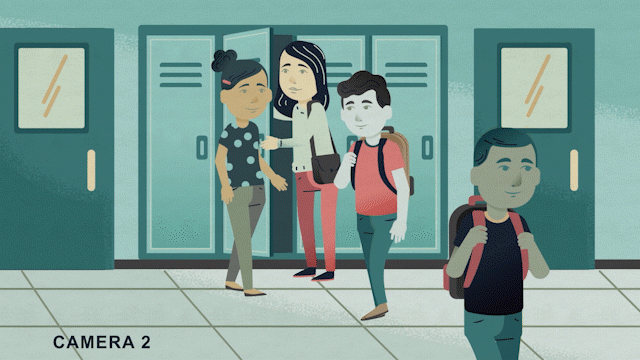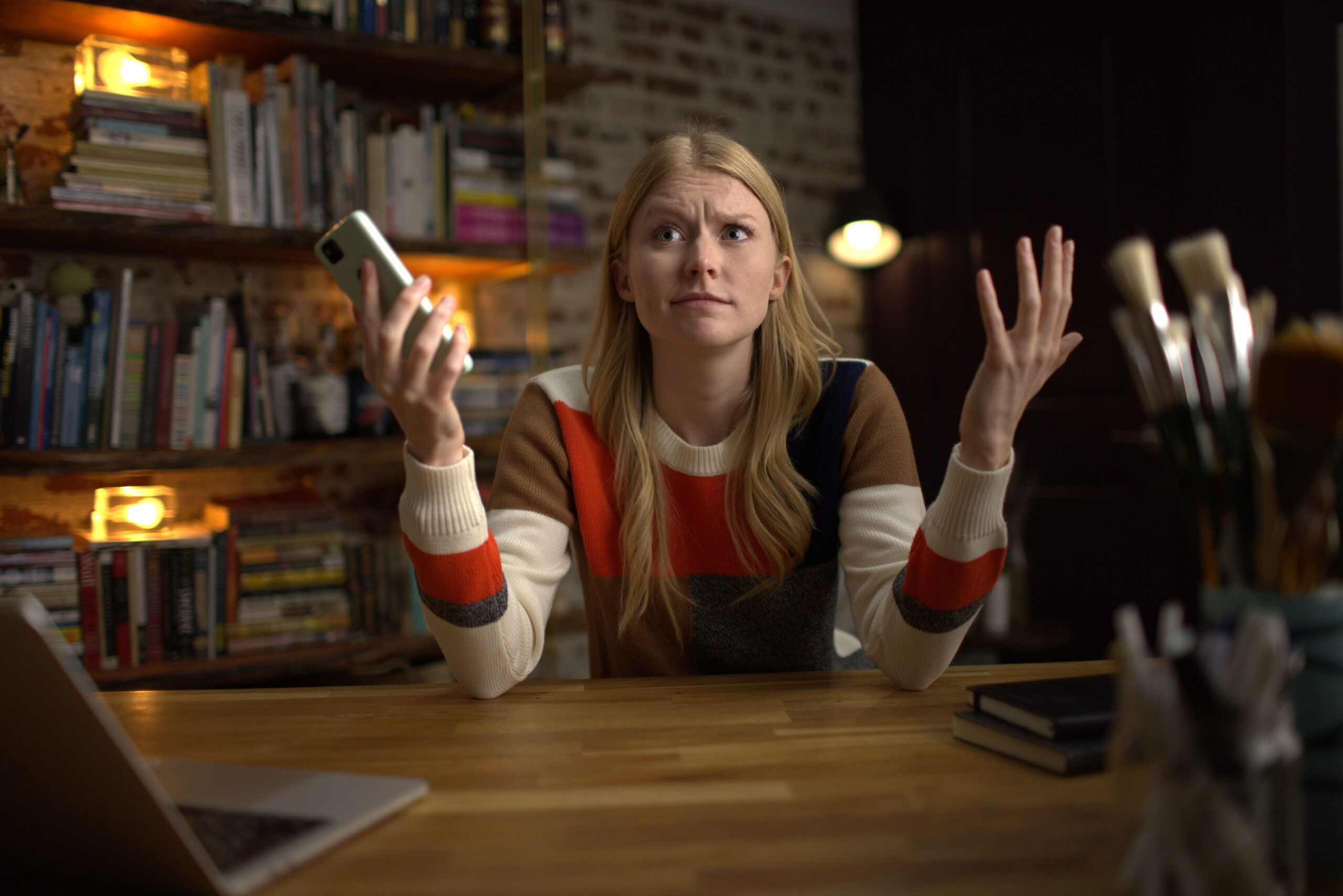Producing Fantastic Animated Video for Sight on Scene
Animated videos seem pretty straightforward on the surface, mainly because they’re great at simplifying complex ideas. But they go a lot deeper than you might think. There are quite a few moving parts (pun intended?) that bring these things to life and cause them to be so useful. Just like the piece itself, the process can be broken down into a few main parts. Planning, scripting/storyboarding, asset creation/animation, and final touches.
Planning
As with any video, the first step is always planning. Establishing a “voice” and direction as well as a style. In the case of SOS, we knew we had a serious but sensitive topic. Their goal was to use this animated video as a B2B sales tool and introduce school administrators to their unique solution to disaster resolution.
We needed the video to explain what SOS is, how it works, and why it’s crucial. We also needed the video to keep the viewer engaged and naturally answer questions that arise in their brains while viewing the video. This would mean creating a style and tone to fit these goals.
As we started brainstorming ideas, one thing stood above all else… we couldn’t let the piece become cartoonish because then it would lose the impact it needed to deliver. But, we also didn’t want to pray on fear as a tactic. It would take a delicate balance in style and script tone to really nail this one.
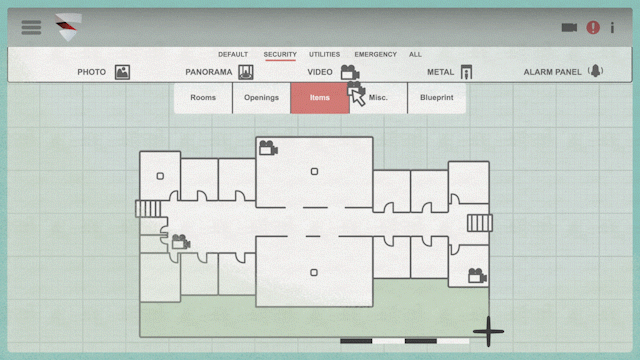
The Script
The script, just like the style, would need a balance in tone as well. Through some collaborative discovery sessions with the client, we reviewed the product in-depth, honed in on the details, and highlighted the key points. This would be the foundation of the story.
With critical points established, we began to flesh out the story. While developing the script, I stuck with a “to the point” narrative knowing that the VO could be delivered with a personal feel to create that balance. After creating the script’s framework, the client and I sat down to collaborate on honing in the details and finalizing the messages. This session with the client made sure every last detail was being covered, and their vision was being realized and translated correctly, and to finalize and lock down the script.
This script would be the groundwork for every other step in the process. After scripting, we worked up some quick storyboards – which would work twofold: one, by helping clearly layout the vision and pacing, and two, act as a visual guide to the script for the animation. Storyboard boards can help immensely when multiple parties need to work on a vision from a director. After all, we work in video production and favor the “show don’t tell” mentality.
Animation & Illustration
In some cases, an animated explainer video’s animator and illustrator are one and the same. But, because of our need for balance with SOS we chose to break these two tasks up. I knew I had an illustrator whose style would perfectly fit but who doesn’t specialize in animation. While working through the illustrator, we went through a few different iterations of character design to really hone in on a direction. Did we want a face, or not? What was the color palette… how would characters look and feel? These subtle aspects play a role in the story and can’t be overlooked because these fine details could make or break a piece.
We looked at key indicators of what the brand was trying to portray to inform our decisions through our discovery session. After the style was locked down, the illustrator started creating assets for each scene of the storyboards. These assets would need to be created and layered so when passed off to the illustrator, each piece/layer was broken apart and moveable. A flat image does nothing to help an animator, but a meticulously broken down and layered file gives them complete control on the back end for every bit and piece to be animated and moveable.
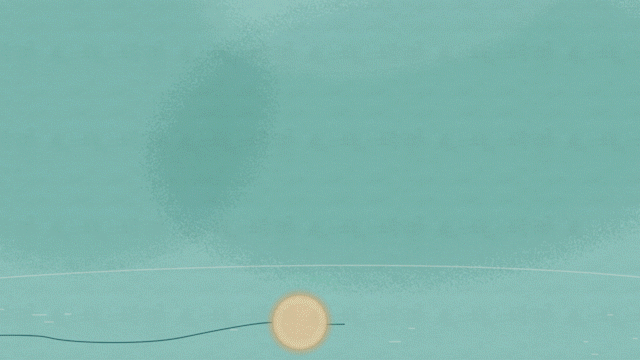
The timeline on this project called for some creative efficiency while moving into the animation phase. We developed a rolling process that, as each scene was finalized by the illustrator, we would move into the animation phase, and the illustrator would start the next scene while the client approved the last and so on. This rolling process allowed us to cut down on lag times between handoffs and build the scene by scene as all parties continued to work and the client could approve scenes. The storyboards laid out a visual direction clearly and allowed for the animation to be a smooth process. Although tedious in nature, the upfront planning eliminated guesswork that many times slows down an animation process.
Final Touches
Even after the whole story was built, there were still final touches to be tackled. In this case, the VO was recorded simultaneously as the illustrator and animator were working. We chose a female voice to lead us through the piece. Her voice was warm and welcoming but delivered in a matter-of-factly way. The script was handed over, and we recorded her session remotely while I directed her from an online call.
This whole process went very quickly and was finalized entirely within a day. Our VO artist was a true professional and could adapt tone on the fly for multiple takes. This made the final VO super easy to choose takes. Following this, we delivered the finalized and exported VO track to the animator to use as a guideline for timing. The last step of the process was music and sound effects.
For music, we selected something to fit the tone. Believe it or not, music is one of those steps in the process that, on the surface, is very simple but has the potential to radically affect the outcome of the piece. The vibe needs to support the message and carry the tone.
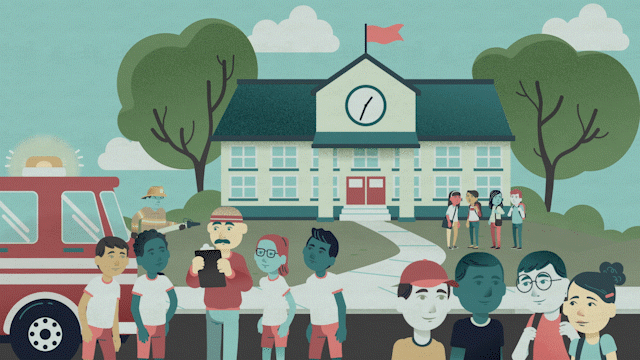
Last was SFX. From subtle wooshes to emphasize movement to the click of a mouse, or ambient school hallway sounds, sound effects fill out an animated video to really bring it to life. You never really hear sound effects if the job is done right, but the viewer is affected by them. When laying in sound effects, we didn’t want to go overboard, but we did want almost every bit of movement to receive the amount of attention it deserved.
Overall this was one of the smoothest productions we’ve ever directed. We’re thrilled with how the piece turned out and thankful to all the folks that had their part in creating it. We’re incredibly grateful to have had the opportunity to make pieces that we feel with do some good in the world. Advertising can be a very shallow place, but being allowed to work on a video that can potentially impact saving someone from injury or even their life is something that makes the job worthwhile.



